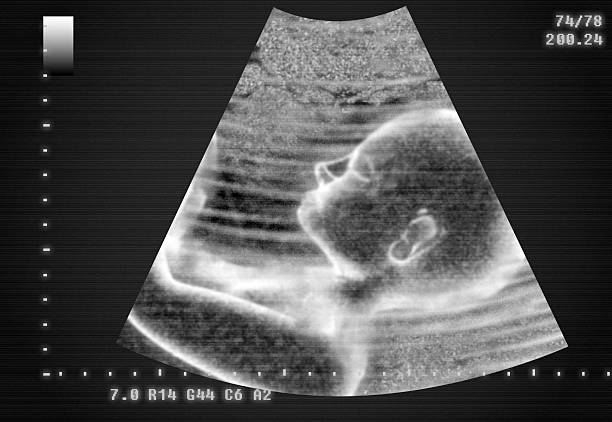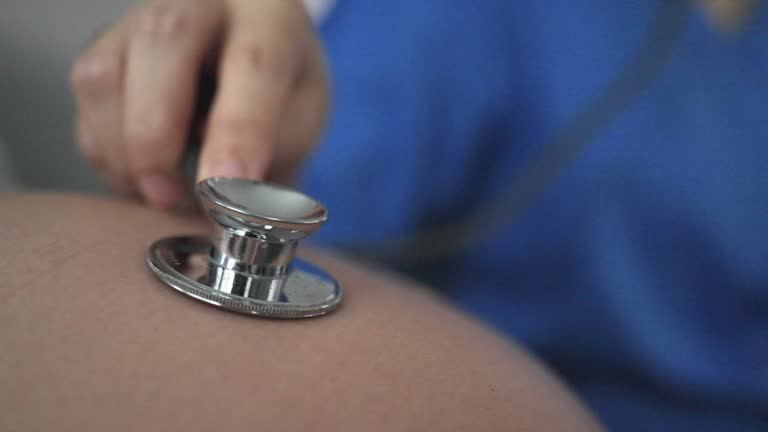Auscultation of fetal heart tones is an essential component of prenatal care. This process involves listening to your baby’s heartbeat to monitor their health and well-being during pregnancy. It allows healthcare providers to detect potential issues early, ensuring timely intervention if necessary. Understanding the methods, timing, and significance of this process helps you actively engage in your pregnancy care.
What Is Auscultation of Fetal Heart Tones?
Auscultation involves listening to the sound of your baby’s heartbeat. This can be done using tools like a stethoscope, Doppler device, or electronic fetal monitors. The heart tones provide critical insights into your baby’s condition, including their heart rate, rhythm, and overall health. Regular auscultation ensures the baby receives adequate oxygen and is developing normally.
Why Is Auscultation of Fetal Heart Tones Important?
Monitoring fetal heart tones helps ensure your baby is healthy. Here’s why it matters:

- Heart Rate Assessment: A normal fetal heart rate ranges between 110 and 160 beats per minute (BPM). Deviations from this range could indicate stress or other concerns.
- Detecting Distress: Irregular heart patterns may signal reduced oxygen levels or other issues, requiring immediate attention.
- Tracking Development: A consistent heart rhythm reflects good growth and a healthy environment inside the womb.
- Reassurance for Parents: Hearing your baby’s heartbeat provides peace of mind and strengthens the bond between you and your baby.
When Is Auscultation Performed?
Auscultation is performed at different times during pregnancy and labor, depending on the method used:
- Early Pregnancy (10-12 weeks):
- A Doppler device can detect fetal heart tones as early as the 10th week.
- Auscultation during this period confirms the baby’s viability.
- Mid-Pregnancy (18-20 weeks):
- A traditional stethoscope can detect the heartbeat after 18 weeks when the baby’s heart is stronger.
- Doctors use this time to assess heart rhythm and rule out abnormalities.
- Late Pregnancy and Labor:
- Continuous monitoring during labor ensures the baby is not in distress.
- Devices like electronic fetal monitors are used to track heart patterns in real time.
How to Perform Auscultation of Fetal Heart Sounds with a Stethoscope
Using a stethoscope for fetal heart auscultation is one of the simplest and most effective methods. Here’s how it’s done:
- Preparation:
- Ensure a quiet environment to hear the heartbeat.
- Lie down comfortably or recline slightly for better access to your abdomen.
- Locate the Heartbeat:
- Your healthcare provider will first palpate (feel) your abdomen to locate the baby’s position.
- The best auscultation site is usually near the baby’s back.
- Place the Stethoscope:
- The stethoscope diaphragm is placed firmly but gently on the identified location.
- Ensure there’s no interference from clothing or external noise.
- Listen to the Heartbeat:
- A rhythmic “lub-dub” sound will be audible, reflecting the baby’s heart rate.
- Your provider will count beats per minute to ensure it falls within the normal range.
Fetal Heart Sound Auscultation Site
The site for auscultating fetal heart sounds depends on the baby’s position in the womb:
- Head-Down Position (Cephalic Presentation): The heartbeat is best heard just above the mother’s pelvic bone.
- Breech Position: The heart tones are often heard higher up, near the belly button.
- Side-Lying or Transverse Position: The auscultation site may vary; your doctor will adjust the placement based on the baby’s orientation.
Techniques for Auscultation of Fetal Heart Tones
Different tools are used for fetal heart sound auscultation. Here’s a comparison of their features:

| Method | Description | When Used | Advantages |
| Stethoscope | Traditional tool to listen directly to the heartbeat. | After 18-20 weeks of pregnancy. | Cost-effective, no batteries. |
| Doppler Device | A handheld device that amplifies the sound of the heartbeat. | As early as 10-12 weeks. | Sensitive, early detection. |
| Electronic Monitors | Advanced equipment used for continuous monitoring during labor. | During labor and high-risk cases. | Real-time, very accurate. |
Doppler devices are highly sensitive and are often used early in pregnancy. In contrast, stethoscopes are better suited for later stages.
Fetal Heart Sound Auscultation Time
- Early Pregnancy (10-12 weeks): Doppler devices can detect faint heartbeats.
- Mid-Pregnancy (18-20 weeks): Stethoscopes become effective for auscultation.
- During Labor: Continuous monitoring ensures the baby remains healthy and stress-free.
Signs of Abnormal Fetal Heart Tones
During auscultation, your healthcare provider looks for specific signs:
- Bradycardia: Heart rate below 110 BPM, possibly indicating low oxygen.
- Tachycardia: Heart rate above 160 BPM, which could signify stress or infection.
- Irregular Rhythm: This may suggest structural heart problems or other complications.
If abnormalities are detected, your doctor may recommend further tests like an ultrasound or continuous electronic monitoring.
Benefits of Auscultation of Fetal Heart Tones
- Early Detection: Identifies potential complications before they escalate.
- Safe Monitoring: Non-invasive methods ensure no harm to you or your baby.
- Parental Bonding: Hearing the heartbeat fosters emotional connection.
Conclusion
Auscultation of fetal heart tones is a vital step in prenatal care. It helps monitor your baby’s health and detect potential issues early. Whether it’s done with a stethoscope, Doppler, or advanced monitors, this simple process provides peace of mind for expecting parents. Talk to your doctor to learn more about fetal heart tone monitoring and its role in ensuring a safe and healthy pregnancy.
By understanding this important practice, you can stay informed and proactive throughout your pregnancy journey.


